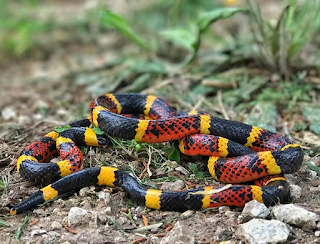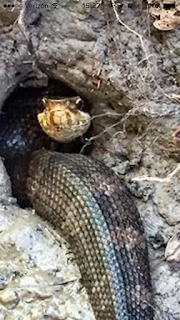Bravery could mean something as simple as standing on top of the monkey bars to a Tiger scout or signing your name on the line to dedicate your life serving in our nation's military. Bravery can be conquering Mt. Everest or having the courage to stand up before strangers to deliver a speech. It could be going away for the first time ever to camp without the creature comforts to which you've grown accustomed... to walking into the meeting of a brand new Pack and trying to make friends with people you don't know.
Bravery is saying no to the wrong thing.
Bravery can be having the courage to quit when you know the path by which you travel is not the one you intended. Listening to that inner voice rather than the masses of people that you may have surrounded yourself with.. is very brave.
Being okay with being different... is brave.

Bravery is... showing up... in every sense of the word.
{I do have to put a disclaimer here though -- don't let me allow ANYONE to confuse being brave with being stupid because the internet is FULL of people doing really, REALLY stupid things that don't equate to an OUNCE of bravery.}
Thanks, I feel better now.
Every month in the Scout's Life magazine there is a feature called Scouts In Action. Many of their stories highlight scouts all over the world who showed bravery. Check out some of those stories the next time it arrives in your mailbox. In fact, here's a link to the site with the previously published Scouts in Action pages from the magazine. If you want to receive this magazine at your home, you can for $12 with your recharter.
So taking on the idea of bravery... did you know that a Scout can face danger even if they are afraid... that's being brave. Think of all the things people are afraid of. I'll bet that one of the top fears on more lists than you could even fathom is...
!! SNAKES !!
There are lots of people who believe that the only good snake is a dead snake but there couldn't be anything further from the truth. Snakes are beneficial to our ecosystem in more ways than you can imagine. The way to learn to be brave if you're afraid of them is by educating yourself to identify the venomous snakes you might come across so that when you see anything other, you can simply appreciate them (and... perhaps spray them with a water hose to get them to go away if you're still not a fan).
Shaun Hayes has one of my favorite Instagram accounts @tx_snakewrangler and he has given me permission to use his photos for this post. They're beautiful and amazing and I'm so grateful for his love of herping which enables me to share with you ways to identify these creatures. Because, the more you know...the more you grow! Please check him out on YouTube too right here.
Coral Snake
- Coral snakes have one of the strongest venoms of any snake, but because of their small jaws they are not considered as dangerous as rattlesnakes.
- The snakes are usually between 18 and 20 inches long. Some grow to be 3 feet long.
- They can be as skinny as a pencil.
- Their heads are small and look like their tails.
- Their fangs are always out because they cannot pull them back into their mouths.
- There is a harmless king snake that looks so much like the coral snake that people made up a rhyme about their coloring. However, it is a good idea to never pick up any snake unless there is an adult with you. The rhyme is: “Red and yellow, kill a fellow; “Red and black, just stay back.” So, if the red bands touch the yellow bands, you know it's a coral snake.
- Coral snakes live in a variety of habitats, ranging from marshes to woods and sand hills. They also like to sleep under rotting leaves. They are often found in suburban areas as well.
- They eat lizards and other small snakes.
- They lay eggs. Babies are 7 inches long when they hatch and are fully venomous.
- Most people who are bitten receive the bite when they pick up the snakes or step on them with bare feet.
 |
| Here is a photo of a coral snake. See if you can find the head. See how the red touches yellow? |
Copperhead
- Copperhead snakes get their name from their copper-red heads.
- They are pit vipers and have heat-sensing pits on their faces that help them detect prey.
- Copperheads have wide, muscular bodies with hourglass-shaped markings.
- They average between 2 and 3 feet long.
- They live in many different environments, including rocky areas, woods, and mountains; near streams, desert oases, and canyons. Nearer to humans, they also love to live in wood and sawdust piles, abandoned and overgrown yards, and old construction areas.
- Although they hunt alone, they are social and hibernate in dens with many other snakes.
- Copperheads eat mice and other small rodents, small birds, lizards, amphibians, small snakes, and insects.
- They use their pits to sense heat and track prey. After they bite large prey, they wait until the prey dies and then eat it.
- Adults sometimes eat only 10 to 12 meals a year if the meal is a larger animal.
- Babies are born live with fangs and venom as dangerous as an adult snake’s.
- Copperheads give no warning and will strike almost immediately if they feel threatened.
 |
| See how the pattern looks like Hershey Kisses? That's a characteristic indicative of one species of copperhead. |
 |
| This is a broad banded copperhead. |
 |
| Another view of a copperhead. |
Rattlesnake
- A rattlesnake’s warning sounds are hissing and rattling of its tail.
- Rattlers can grow to be 1 to 7 feet long.
- They have a distinctly triangular head.
- Every time a rattlesnake sheds its skin, another ring is added to the rattle on its tail.
- Rattlesnakes live in many different environments in North and South America. They can live anywhere from desert sands to grasslands, scrub brush, rocky hills, and swamps. They can live in high elevations, up to 11,000 feet.
- Texas has NINE native species of rattlers. I've only seen four in my life.
- Generations of rattlesnakes can use the same dens for hundreds of years.
- They give birth every two years to live babies.
- They can live up to 30 years.
- Rattlesnakes eat small rodents, reptiles, and insects.
- Their strike is extremely fast.
- They eat about every two weeks.
- Most rattlesnake strikes on humans happen when the snakes are stepped or sat upon.
 |
| This is a massasauga rattler. Distinctive by the rattle (shocker) and the Pac Man pattern. |
 |
| This is an Eastern Timber rattlesnake |
Cottonmouth a.k.a. Water mocassin
- Cottonmouths are the only venomous water snake in North America, but they are also happy soaking up the heat on land.
- They have a triangular head and a thick body.
- They are also commonly called water mocassins.
- They are called cottonmouths because they open their mouths wide when they are threatened. The inside of the mouth is white, like cotton.
- They are pit vipers.
- Cottonmouths range from 2 to 4 feet long.
- They have dark vertical lines by each nostril and pale snouts.
- They can be found in swamps, marshes, drainage ditches, ponds, lakes, and streams or sunning themselves on land nearby.
- They swim with their heads out of the water.
- They eat fish, birds, amphibians, lizards, baby alligators, turtles, small mammals, and other snakes.
- Babies are born live in litters of up to 20.
- When threatened, cottonmouths will coil up, open their mouths, and expose their fangs.
 |
Speaking of mimicry... I want to draw your attention to how these NON VENOMOUS snakes can flatten their heads to LOOK largely triangular (which people like to say is indicative of venomous snakes). Lots of snakes learn ways to appear big and bad so they're not messed with. Another reason to educate yourself.
 |
| This plain bellied watersnake is frequently confused with a cottonmouth. See the vertical bars along its mouth? That's another way to identify this harmless, nonvenomous species. |
Below is a video posted by the Texas Parks and Wildlife Department to help you see these species moving in the wild.
And if just watching this gave you the heebie jeebies -- thanks for being brave and making it to the end!








No comments:
Post a Comment
Thank you for your comment. Once it has been reviewed and approved, it will be posted on the site.